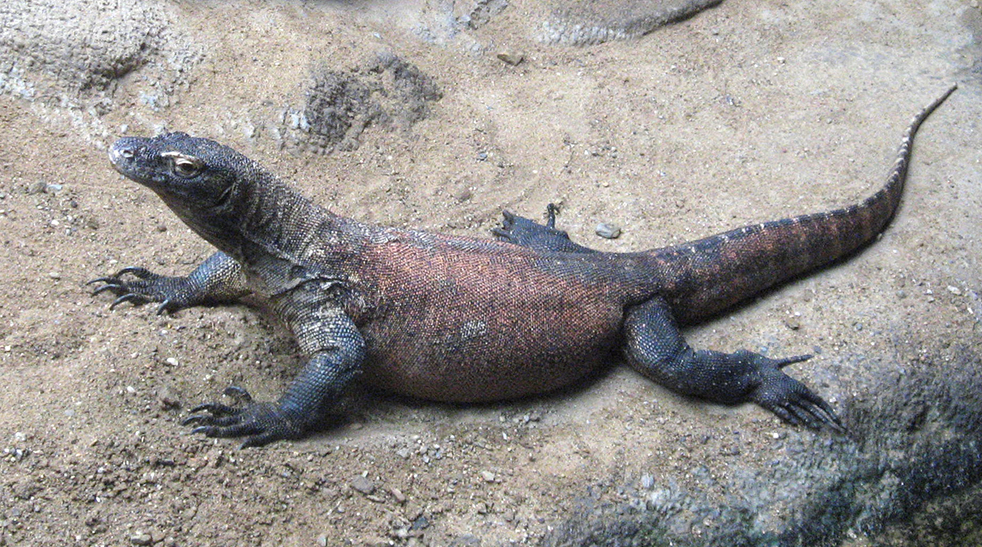
It hides quietly in the tall grasses off the coast of Komodo Island in Indonesia. It has sharp vision. It can see the deer approaching from nearly 1,000 feet away. It is a patient hunter, only capable of fast speeds in short bursts. It is an ambush hunter. It waits for its prey to get close before it strikes. The dragon watches the large deer approach. The deer is finally within striking distance.
The grasses rustle and the deer looks up. But it isn’t quick enough to escape the dragon’s sharp teeth and strong jaws. It bites the deer. The deer squirms and bucks. It escapes. The injured deer runs into the safety of the nearby woods. It can run, but it cannot hide. This deer will not survive. It will become food for the patient and mighty Komodo dragon.
The Komodo dragon follows its doomed prey at a leisurely pace. Venom and bacteria from its mouth quickly begin to work their magic on the wounded deer. The venom keeps the blood from clotting. This keeps the wound from healing. It also reduces the animal’s blood pressure. This sends the animal into shock and makes it too weak to fight. Bacteria in the dragon’s mouth make the animal sick.
The dragon flicks its forked tongue to taste the air. It detects the smell of blood. It has a strong sense of smell. I can detect carrion (a long-dead animal) from six miles away. It follows the deer for hours. They finally meet in a clearing in the woods. The deer is lying down. It can no longer flee or even fight back. The dragon makes a quick meal of it, consuming nearly all of the deer. Then it slinks back to the tall grasses to rest and digest its enormous meal. The dragon has consumed nearly 80 percent of its body weight in this one meal.
Komodo dragons are the largest lizards in the world, growing to be more than 10 feet and weigh more than 300 pounds. They’re also one of only a handful of venomous lizards in the world. The fact that they’re venomous, though, was only recently discovered in 2009. Before then, scientists thought that it was the aggressive bacteria living in the dragon’s mouth that eventually brought down its prey.
Komodo dragons are named for Komodo Island, one of the Indonesian islands upon which they live. However, Komodo dragons can also be found on some other Indonesian islands within Komodo National Park. These include as Gili Montang, Gili Dasami, and Rinkca—which currently hosts the largest dragon population. Today, there are only about 3,000 dragons left in the wild.
Dragons have big appetites and large adults favor large prey like water buffalo, deer, pigs, and sometimes humans. Young dragons tend to live in the trees, which keep them out of reach from fully-grown dragons. Komodo dragons are cannibals, which means that they eat their own kind. Young dragons eat smaller animals, like birds or rodents.
An interesting fact about Komodo dragons is that females can reproduce without a male. This is called asexual reproduction. Females build decoy nests to protect their eggs from predators. Females lay about 20 eggs per clutch and don’t appear to care for the eggs after laying. Newborn dragons are about a foot long. They run from their nest to the safety of the trees to avoid being eaten by predators, other dragons, or even by their own mother.
By the time they are four years old, Komodo dragons begin to live on the ground. The dragons have a pretty long life span and can live to be 30 years old.
Humans live side by side with Komodo dragons. As people multiply and build more and more houses, they take away natural areas from the wild dragons. This means that the dragons’ habitat is shrinking. While dragons rarely attack humans, the humans still need to be careful, especially around tall grasses where a dragon could be hiding.



 About BeeLine
About BeeLine